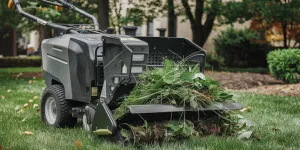- The lawn sweeper market is expected to grow significantly from USD 100.1 million in 2023 to USD 250.1 million by 2030, driven by landscaping trends and increased homeownership.
- Technological advancements improve sweeper design, efficiency, and appeal.
- Market challenges include seasonal demand, high costs, competition from other lawn tools, and storage needs.
- Key considerations for selecting a lawn sweeper include type, capacity, brush-to-wheel ratio, maneuverability, durability, and price. A summary table is attached at the end of the article.
- We compared five popular models, each with specific features suited to different needs. Check out their pros & cons before stocking.
Introduction
As the demand for pristine outdoor spaces soars, the lawn sweeper market is witnessing remarkable growth, projected to expand from USD 100.1 million in 2023 to USD 250.1 million by 2030. This article offers a detailed guide on how to choose the best lawn sweeper, covering common types, key features, and top models in the market to ensure you make an informed decision tailored to your business needs.
Table of Contents
What is driving the lawn sweeper market?
What to consider when selecting lawn sweepers?
What are the key features of a lawn sweeper to look for?
Comparison of lawn sweeper models popular in the market
Summing up
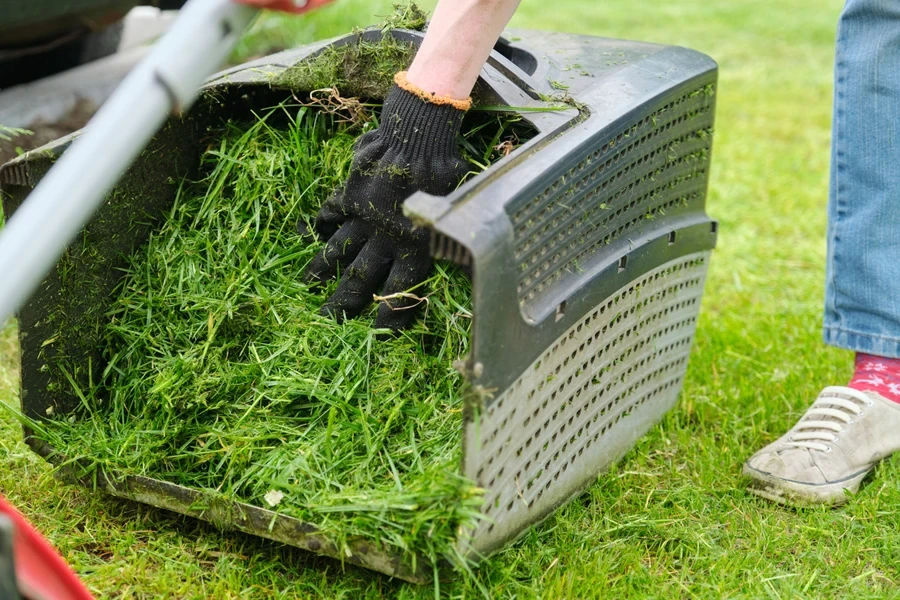
What is driving the lawn sweeper market?
Driven by a compound annual growth rate (CAGR) of 5.1% from 2024 to 2030, the worldwide lawn sweeper market is expected to develop significantly from USD 100.1 million in 2023 to USD 250.1 million by 2030. Growing trends in landscaping and gardening, which have driven demand for effective lawn care equipment, help to explain this increase. Furthermore, driving the market are rising rates of homeownership, particularly in suburban areas, as more people search for quick fixes for keeping their lawns.
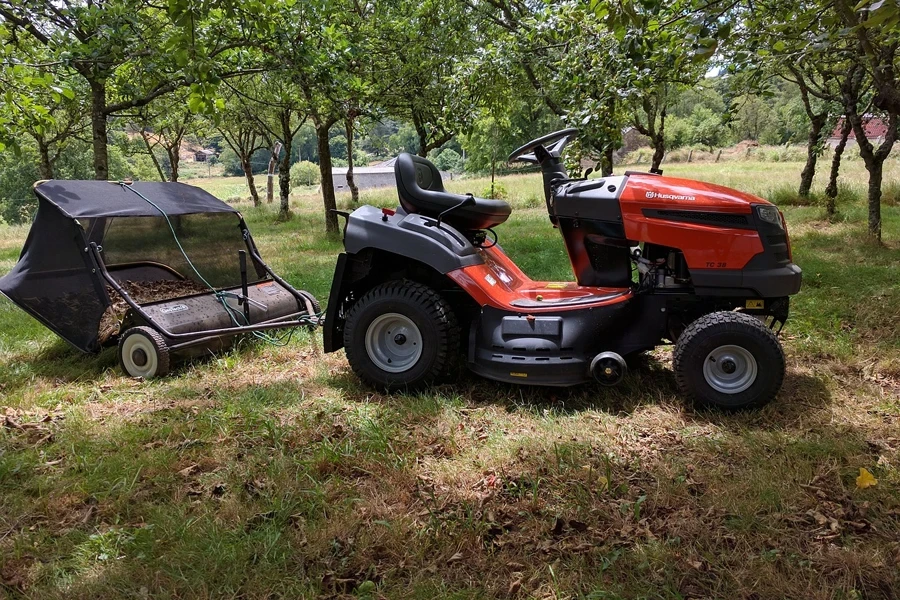
Technological advancements and innovation are also important factors in shaping the lawn sweeper market. A wider spectrum of customers find lawn sweepers more appealing and effective as design, features, and material efficiency improve. Driven by increasing environmental consciousness and the necessity of sustainable maintenance techniques, this trend towards more complex and environmentally friendly lawn care solutions is expected to keep on.
However, the market faces several challenges, including seasonal demand, high initial costs, and competition from other lawn care tools such as leaf blowers and mulching mowers. Another impeding market growth could be the storage capacity needed for bigger sweepers and limited awareness. Notwithstanding these difficulties, the general view is still favorable since there are major chances for development in both commercial and residential sectors.
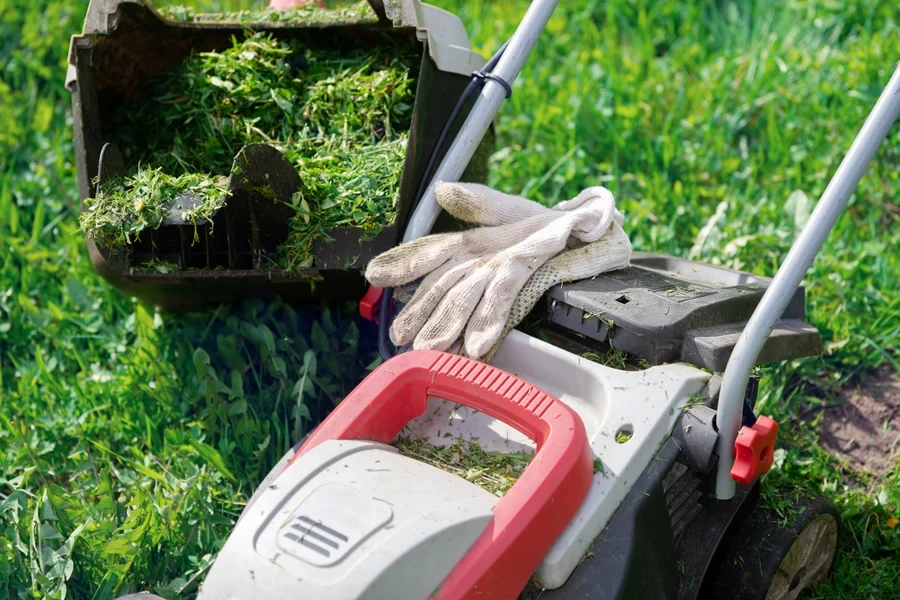
What to consider when selecting lawn sweepers?
Lawn sweepers are essential tools designed to keep outdoor spaces tidy by efficiently collecting debris such as leaves, twigs, and grass clippings. They come in various types, each suited for different needs and preferences.
Manual Option: Push Lawn Sweepers
Push lawn sweepers are manual tools that are best suited for small, flat lawns. With sweeping paths between 20 and 30 inches, they resemble small lawn mowers, are light-weight, and easy to store. Usually featuring two front wheels that spin brushes to gather debris, push lawn sweepers then place their contents into a hopper bag connected to the frame. Since they don’t powered by fuel or release any pollution, they’re ideal for people who care about the environment. Though smaller, lighter, and more reasonably priced, they demand physical effort, which might not be perfect for everyone.
Powered Option: Tow-Behind Lawn Sweepers
Larger yards would find tow-behind lawn sweepers appropriate since they are made to be attached to riding lawn mowers or lawn tractors. Usually more efficient than their push counterparts, especially for heavy debris or bigger areas, these sweepers have a bigger hopper for gathering debris.
Additionally have movable heights for the brushes so that users may adjust their cleaning depending on the type of waste being gathered or the length of the grass.The mower’s battery powers the brushes, so enabling a more easy cleaning experience.
These powered sweepers can be either electric or gas-driven. Although electric models could be more convenient, they often weigh more, cost more , and need more storage space than push models.
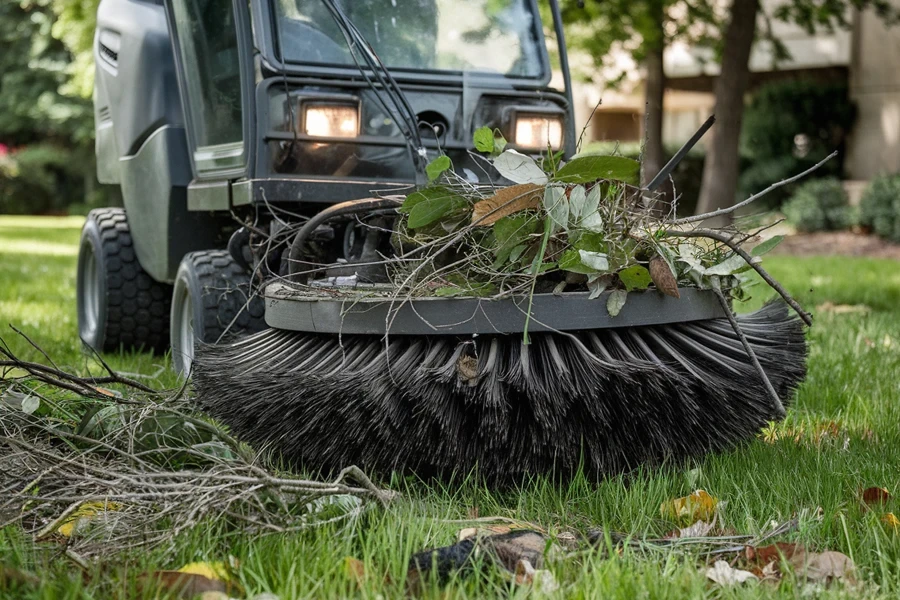
Specialty Lawn Sweepers
Certain lawn sweepers include specific features meant to improve their use. To help with debris collecting, some models might have movable brush heights or unusual brush designs—straight or spiraled. These characteristics make them flexible for different types of lawn conditions and waste, so serving both professionals running several grounds and casual users.
What are the key features of a lawn sweeper to look for?
Several key features of a commercial lawn sweeper should be closely considered to guarantee best performance and efficiency.
1. General quality
The lawn sweeper’s general quality is of first importance. One should take into account the building materials as well as the utility of several features. Usually made with heavy-duty steel components, high-quality models often survive regular use better than those produced from plastic. Investing in a well-made sweeper will offer improved long-term value and simplicity of use.
2. Hopper capacity
Another quite important consideration is hopper capacity. A bigger hopper can help to reduce the need for regular emptying throughout running. For large areas of lawn, models with up to 25 cubic feet of capacity can be quite helpful. However, larger hoppers should be equipped with a dump feature to reduce the strain of lifting heavy loads of debris.
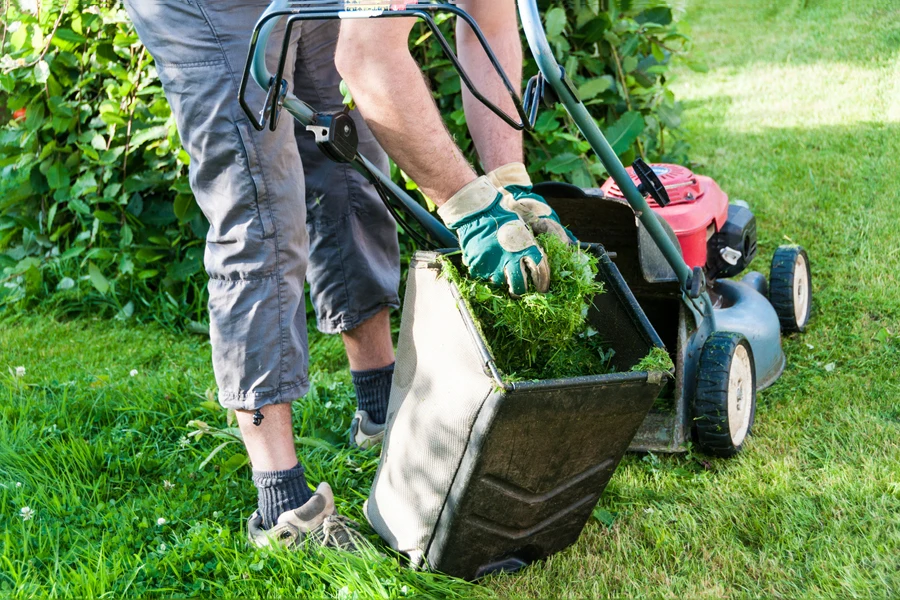
3. Ratios of brush to wheel
A lawn sweeper’s efficiency is much indicated by their brush to wheel ratio. A high ratio—ideally 5:1 or more—indicates that the brushes will spin faster than the wheels, so enabling more efficient collection of waste. This ratio is obtained by a transmission system that multiplies the brush rotations in relation to the wheel rotations, allowing the sweeper to efficiently gather all grass waste.
4. Maneuverability
Especially for commercial use where operators must negotiate obstacles, maneuverability and control are absolutely vital. Models designed for commercial purposes often offer enhanced maneuverability through features like zero-turn technology, enabling operators to work efficiently in complex landscapes.
5. Wheel size and width
The efficiency of the sweeper in gathering debris depends directly on its width since wider models can cover more area in one pass. Furthermore affecting the simplicity of use and the capacity to negotiate uneven ground are the wheel size. Usually, bigger wheels offer better traction and stability while running. Examining these important characteristics helps consumers choose the best commercial lawn sweeper for their particular landscaping requirements.

Comparison of lawn sweeper models popular in the market
There are a number of commercial lawn sweeper models to choose from, and each one has its own set of features and benefits. Here is the comparison of several popular models.
Agri-Fab 44-Inch Lawn Sweeper
The Agri-Fab 44-Inch Lawn Sweeper works with both riding mowers and tractors, making it ideal for yards that are medium to large in size. The innovative flow-through design of this model’s 25-cubic-foot collection hopper allows for maximum space utilization. It is adaptable to a wide range of mowing configurations thanks to its adjustable hitch. While it works fine with dry debris, users have complained that it’s difficult to maneuver uphill with wet materials due to their weight.
Brinly STS-427LXH Tow-Behind Lawn Sweeper
Thanks to its convenient tow-behind design, the Brinly STS-427LXH is a popular choice for lawns of all sizes. Its 42-inch sweeping width and 20-cubic-foot hamper make it capable of collecting a substantial amount of debris. The height adjustment mechanism allows for a range of terrains, guaranteeing stable performance regardless of surface imperfections. For individuals who value long-term value and quality, this is a great investment due to its sturdy build that can endure frequent use.
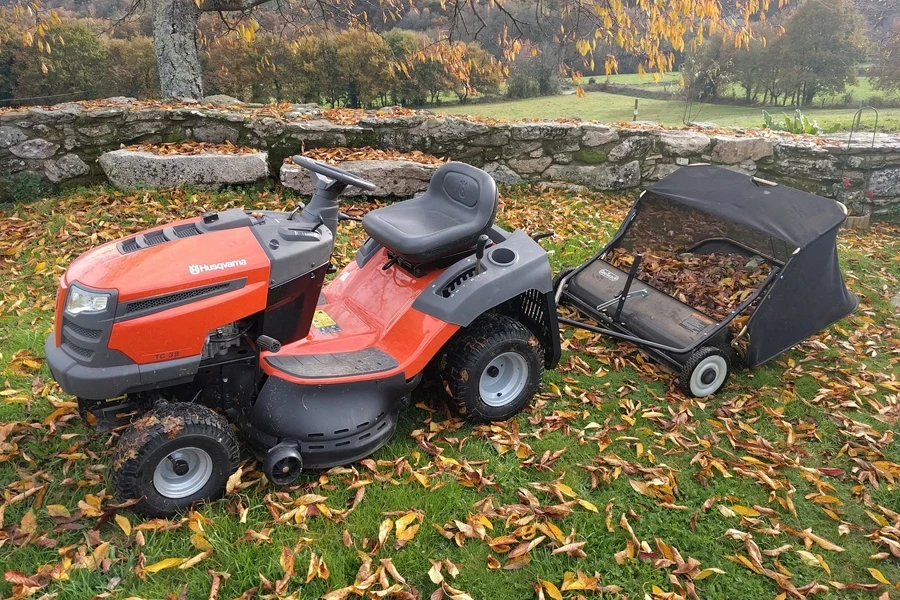
Agri- fab 52-inch Lawn Sweeper
For commercial or extensive lawn care, choose the Agri-Fab 52-Inch, the largest model in the lineup. Ideal for big jobs, it has a 26-cubic-foot hopper and six high-velocity brushes. The adjustable brush height allows for personalized sweeping, and the durable materials ensure longevity even with heavy use.
Earthwise LSW70021 Push Lawn Sweeper
The Earthwise LSW70021 is an affordable push lawn sweeper that provides good value for people with smaller lawns. Dried grass clippings and leaves work best in it. Its simplicity, low price, and lack of power make it a great option for homeowners seeking an alternative to tow-behind models.
Troy-Bilt LS-4222LS 42-Inch Lawn Sweeper
The 42-inch tow-behind sweeper from Troy-Bilt, the TB-4222LS, is another great choice; it’s ideal for light commercial and residential use thanks to its user-friendly design. For users looking for a dependable option that can efficiently clean medium-sized lawns without the need for expensive industrial models, this model is a great pick thanks to its sweeping path and hopper capacity.
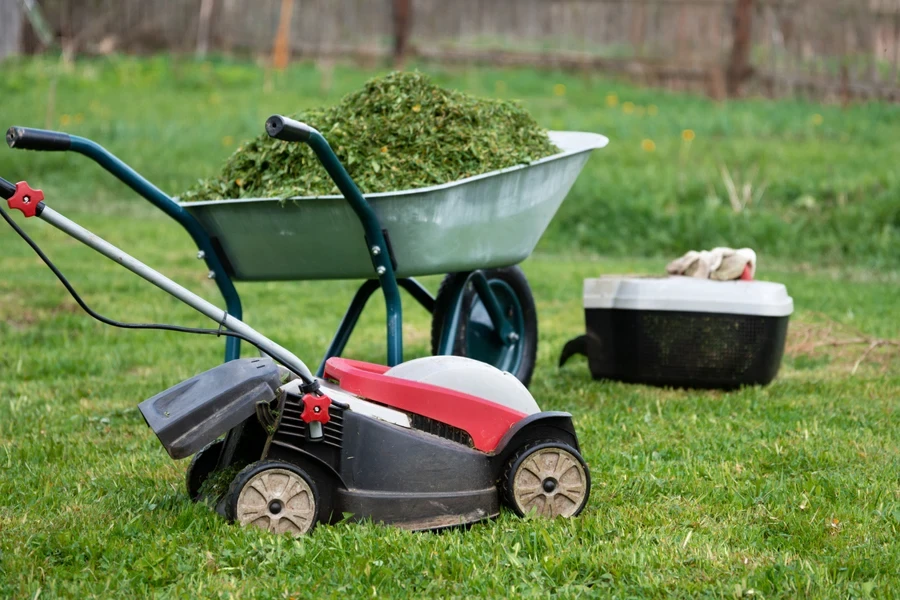
Summing up
By understanding the different types and features of lawn sweepers available, you can select the most suitable option for your specific needs, ensuring a well-maintained and attractive lawn. Here is the information table that summarizes the factors to consider when selecting lawn sweepers.
| Factor | Description |
| Type of Sweeper | Manual Option: Push Lawn Sweepers Powered Option: Tow-Behind Lawn Sweepers Choose based on the size of lawn |
| Hopper Capacity | Larger hoppers reduce the frequency of emptying, suitable for big areas. |
| Brush to Wheel Ratio | A higher ratio ensures more efficient debris collection. |
| Maneuverability | Look for features that enhance ease of navigation around obstacles. |
| Wheel Size and Width | Larger wheels offer better stability and ease of handling on uneven terrain. |
| Adjustability | Adjustable brush heights accommodate different types of debris and grass. |
| Durability | Consider materials and build quality for longevity and frequent use. |
| Storage Requirements | Ensure the sweeper fits your storage space, especially for larger models. |
| Environmental Considerations | Opt for models that align with your sustainability goals. |
| Price and Warranty | Balance cost with the warranty offered to ensure value for money. |
